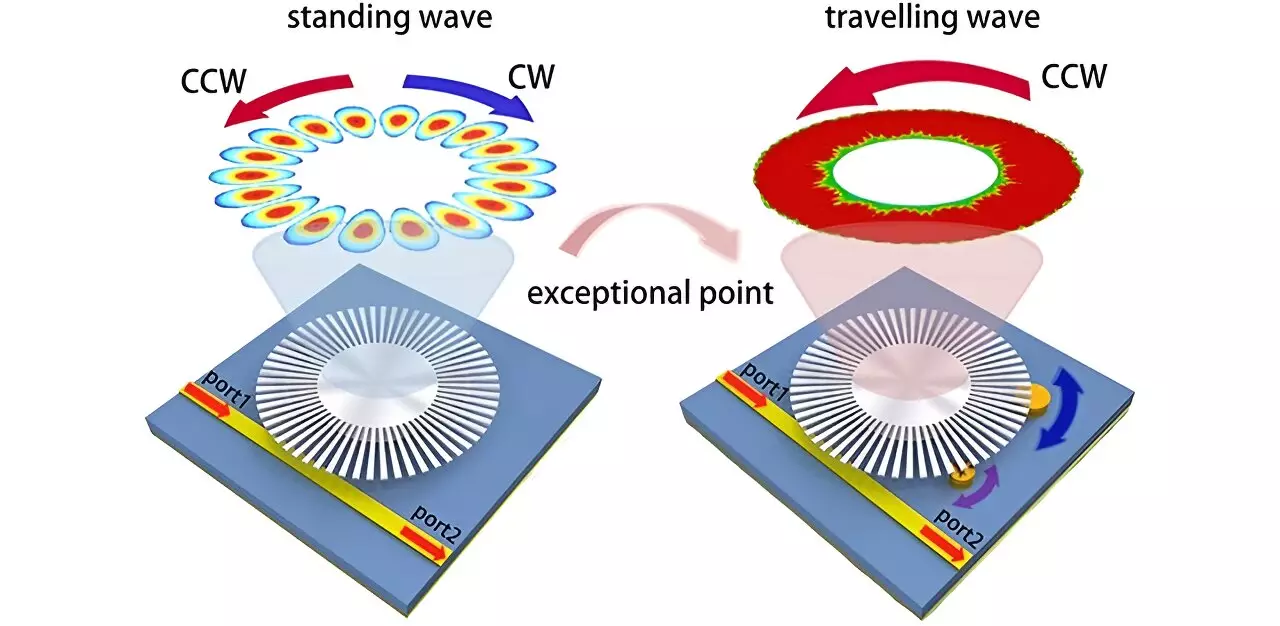In the realm of sensor technology, recent breakthroughs driven by interdisciplinary research in photonics and materials science have redefined the limits of detection and measurement. A pivotal area of exploration is non-Hermitian physics, which has led to the emergence of transformative methods for manipulating light, thereby significantly enhancing sensor sensitivity. A breakthrough study featured in Advanced Photonics Nexus showcases an innovative sensor that utilizes exceptional points (EPs) to achieve remarkable sensitivity levels, demonstrating a leap in sensor capabilities.
Exceptional points are not just theoretical constructs; they represent critical spectral singularities in physics where eigenvalues and their corresponding eigenvectors substantially converge. This convergence is key to enhancing the sensitivity of optical sensors, making it possible to detect minute changes that would typically go unnoticed. Traditional EP-based sensors, such as whispering-gallery mode (WGM) microtoroids, have proven their efficacy by outperforming conventional sensor designs. However, they often grapple with inherent limitations: their fixed EPs hinder precision adjustments post-manufacture, and they are typically confined to narrow frequency ranges, making the detection of small particles a challenge.
The newly designed sensor introduces a single spoof localized surface plasmon (LSP) resonator, which adeptly mimics the behavior of localized surface plasmons while providing significant flexibility. Positioned above a microstrip line and augmented with two movable Rayleigh scatterers, this innovative architecture allows for dynamic reconfiguration of EP states across an extensive frequency range. This reconfigurability not only makes the sensor robust against manufacturing variations but also amplifies its ability to detect particles that are exceedingly small.
This study outlines several remarkable features that contribute to the sensor’s enhanced performance, including:
1. **Reconfigurability**: The incorporation of adjustable Rayleigh scatterers facilitates the dynamic formation and reconfiguration of EPs, resulting in improved precision and versatility of the sensor.
2. **Increased Perturbation Strength**: By confining electromagnetic fields to the resonator’s surface, the sensor achieves an enhanced sensitivity to perturbations introduced by nearby particles.
3. **Support for Multipolar Mode Excitation**: The design accommodates various plasmonic resonance modes, broadening the sensor’s operational bandwidth and its detection capability.
This revolutionary advancement signals a substantial progression in sensor technology, with the potential to detect particles as diminutive as 0.001 times the wavelength of light. Such sensitivity opens up a myriad of opportunities across scientific research domains and industrial applications, paving the way for innovations in fields ranging from environmental monitoring to biomedical diagnostics. The flexibility and performance of these novel sensors promise not just improved measurement accuracy but also the ability to adapt their functionality according to specific needs, ultimately enhancing their utility across various sectors.
The integration of non-Hermitian physics and innovative design principles represents a significant forward leap in the evolution of sensor technology, unlocking new avenues for exploration and application in multiple fields.


Leave a Reply